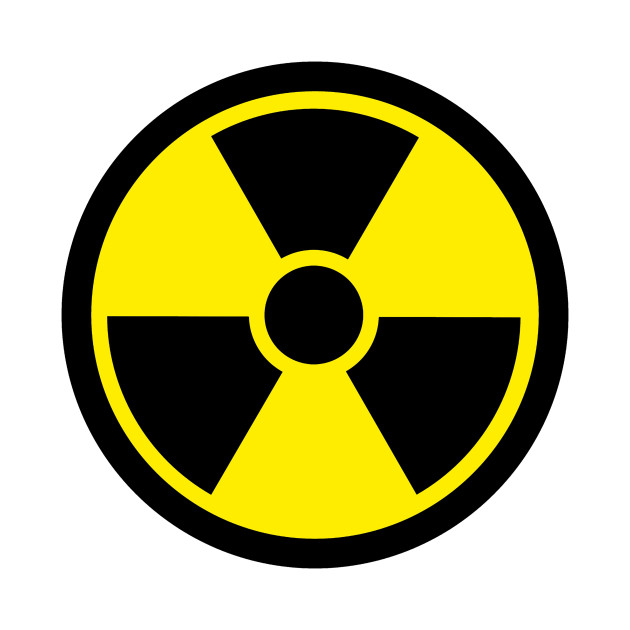Home > Sections > Energy > Radioactivity
Last Updated: 14th June 2023
ARCHIVED ITEM: this page is no longer updated.
Radioactivity
Keywords
Radioactivity, radioactive, uranium, plutonium, gamma, beta particle, alpha particle, X-ray, atomic, subatomic.
Introduction
We recognise the symbol for radioactivity straight away. Three triangles contained within a circle. And it's just as well, as it tells us that it can be dangerous, and therefore not to be messed with. But what is radioactivity?
Radiation
To begin with, you need to understand what radiation is. It is a couple of things - basically it's a flow of atomic and subatomic particles and waves, including heat rays, light rays and X-rays. To be even simpler, if we use the example of the Sun, it emits light and heat toward us (it takes 8 minutes to go from the Sun to the Earth), and this is a form of radiation.
There are two main types of radiation. They are electromagnetic radiation, and matter rays. The difference between them is that electromagnetic radiation is theorised as having no mass. There is no weight to it. They also travel faster than the speed of light. Matter rays hold some (albeit small) mass, and travel at just under the speed of light. Typically, matter rays are negatively charged particles, whereas electromagnetic radation is usually positively charged.
Here is a YouTube video from Cognito about alpha, beta and gamma particles:
Alpha Particles
An alpha particle is a positively charged particles that is emitted by some forms of radiation. They typically have two charged protons and two neutrons, thus having the mass of four, and a positive charge of two. They were discovered by Ernest Rutherford, who experimented to probe the structure of atoms in thin metallic foils. It were these experiments that were the beginning of finding that atoms were structured like tiny little planets.
Uses of alpha particles has come a long way since Rutherford, and they are used for many reasons. These include:
- cancer treatment - radiotherapy, involving inserting radium-226 into cancerous masses
- static eliminator - use of polonium-210 is used to remove static electricity in industrial applications
- smoke detector - alpha radiation is used from americium-241 to bombard air molecules, in part to create a current, which is disrupted by the smoke
- spacecraft power - Voyager 1 & 2 both have polonium-238 in their power sources
- pacemaker battery - using polonium-238 to power a pacemaker many years ago - it has since been replaced with other power sources
- seismic and oceanographic devices - using strontium-90 in the unmanned devices, for life longevity
Dangers of Alpha Particles
With anything radiation-wise, there comes dangers with using alpha particles. Such dangers as breathing in the particles in a smoke-like fashion can cause detriment to the cells within your body that the particles could spread to. Although when presented to the skin, alpha particles may not penetrate it, as the skin works (as it should) as a barrier to protect your body from it.
Other particles, like beta or gamma particles can penetrate the skin, and so will cause damage.
Interesting fact: Nels Garden and his team were doodling the symbol for radioactive materials, when it was confirmed that it would be needed to display. This was in 1946, and uptake gained from 1948 onwards.
Other Particles
I mentioned above about beta and gamma particles. These are both other types of particles that cause radiation. Let's take a little look at both of those.
Beta Particles
Beta particles are high-energy, high-speed electrons or positrons released by pre-historic nuclei, such as potassium-40. They are a form of ionising radiation. As with all types of radiation, they have a long half life (this is where they take a long time to decay). Also, beta particles are slower at ionising than alpha particles, hence the term beta (as B comes after A in the alphabet).
Uses of beta particles range from industrial use (in testing how thick items are like paper or textiles), to medical uses in form of eradicating cancerous cells, and PET (Positron Emission Tomography). In the chemical and biological world, beta particles can be used as a tracer to find what happens to certain molecules that it follows.
Gamma Particles
We all know the story of The Incredible Hulk in Marvel comics. Yes, that's right, the same gamma radiation is used in modern science. Gamma particles are a high-frequency form of electromagnetic radiation. It can actually cause cancers and other medical issues in humans, so can be fatal (to some extent). They have their uses though, if concentrated and focused in application.
Although I just said they can cause cancers, they also do the opposite, so have been used in medication to treat and remove cancerous cells. Also in medicine, they have been used to sterilise equipment, rather than using chemicals.
Much the same as other radiation types, gamma rays can be emitted in different ranges. Due to this, they can be used to scan a human body, by using technetium-99m as a tracer, inserted into the body. A camera that specialises in gamma rays is then used to track it.
Other uses include idustrial radiography, scanning for weaknesses in structures of metal, and also in airports for luggage and cargo scans. In food preparation, cobalt-60 is used to eradicate bacteria when preserving foods. It is also used to prevent ripening and sprouting of fruit and vegetables.




 Energy Resources
Energy Resources Ernest Rutherford
Ernest Rutherford


